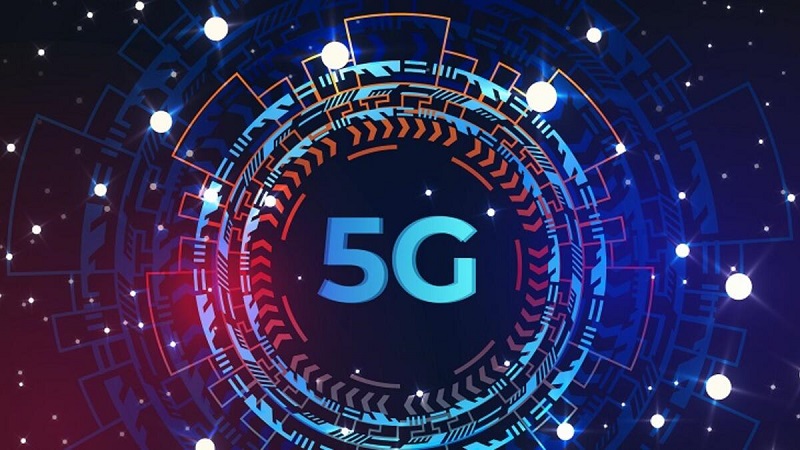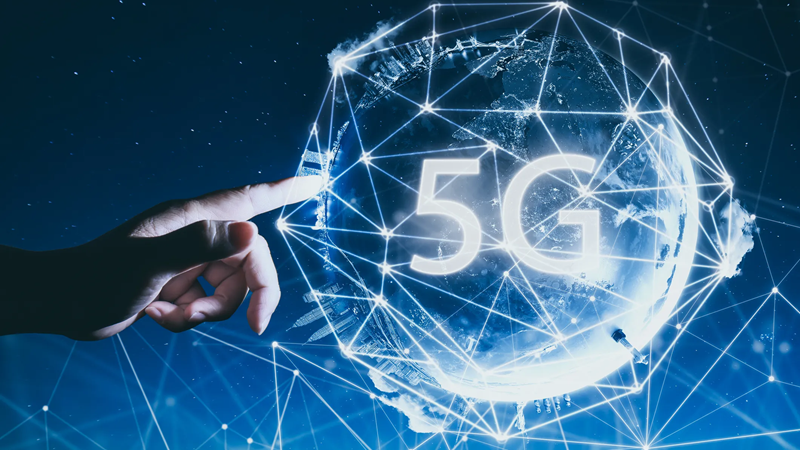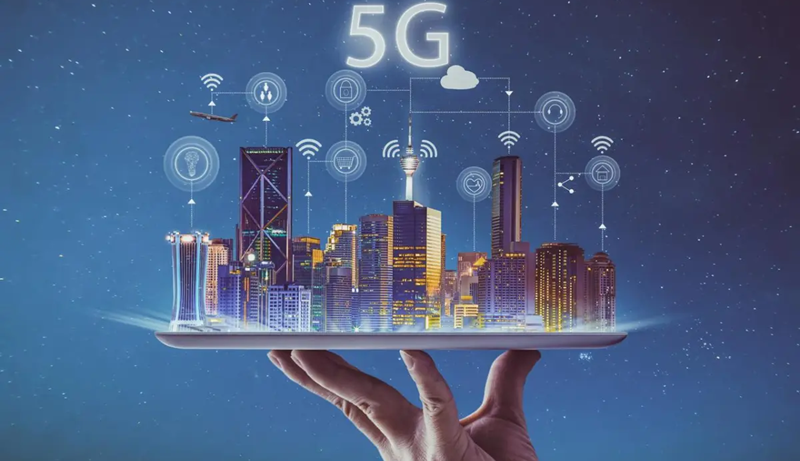5G technology stands as a pivotal element in the evolution of internet technology, promising a future marked by unprecedented connectivity. This fifth generation of mobile networks transcends its predecessors, offering significantly higher data speeds that can go up to 100 times faster than 4G. What truly sets it apart, however, is its low latency, which refers to the brief delay before a transfer of data begins following an instruction for its transfer. With its potential to allow real-time reactions, 5G can revolutionize industries and applications reliant on immediate response, such as self-driving cars, telemedicine, and virtual reality. It also allows for the Internet of Things (IoT) to reach its full potential, as more devices can be connected to the network simultaneously without suffering from lag or other performance issues.
The implementation of 5G technology extends beyond just faster internet. It is anticipated to stimulate innovation and reshape our digital landscape. With its enhanced capacity, it is expected to support the development of smart cities, where everything from traffic systems to power grids are interconnected. The advancements in 5G will also facilitate the growth of machine-to-machine communications, accelerating the automation process in various sectors including manufacturing, agriculture and logistics.
However, the transition to 5G is not without its challenges. Infrastructure, for instance, is a key issue, as 5G requires the installation of numerous small cells for coverage. This could potentially lead to urban clutter and raises concerns about the environmental impact. Furthermore, the costs associated with the 5G rollout are considerable, which might not be feasible for some developing countries. The digital divide could be further exacerbated if these countries are unable to keep up with the pace of technological advancement.
Security and privacy are also significant issues in the context of 5G. The reliance on a networked society and the increased amount of data being transmitted could potentially make systems more vulnerable to cyber attacks. There is a need for comprehensive strategies to safeguard against such risks and ensure the integrity of the data being transmitted.
In conclusion, the future of internet technology with 5G presents both incredible opportunities and challenges. It is a powerful tool that can transform our societies and economies, but its deployment must be carefully managed. As we move forward, it is crucial that we consider not only the technological implications of 5G, but also the social, economic, environmental, and security implications. In doing so, we can ensure that the benefits of 5G are maximized, while the potential risks are mitigated. The future of internet technology is exciting, and with the advent of 5G, it is clear that we are on the cusp of a new digital era.

Understanding 5G
5G, standing for the fifth generation of wireless communications technologies, is a revolutionary advancement that promises to transform the way we interact with technology and each other. It is a quantum leap from its predecessor, 4G, offering faster data download and upload speeds, wider coverage, and more stable connections. Compared to 4G’s maximum speed of 100 Mbps, 5G technology can theoretically offer speeds up to 10 Gbps, a hundredfold increase that allows you to download a full-length HD movie in mere seconds.
Beyond speed, the most significant advantage of 5G is its extremely low latency. Latency refers to the time it takes for devices to communicate with each other. With 5G, this latency could drop to as low as one millisecond, a decrease that can revolutionize industries such as self-driving cars and healthcare, where real-time responsiveness is crucial.
In addition to speed and latency, 5G also offers the advantage of network slicing. This feature allows operators to create multiple virtual networks within a single 5G network. This capability can cater to different types of services and can be customized based on the requirements of specific applications or customers.
However, the implementation of 5G is not without its challenges. The infrastructure requirement for 5G is significant, as it operates on a higher frequency spectrum, which has a shorter range. This means that numerous small cells or mini base stations need to be installed for coverage. Privacy and security concerns also surround the technology due to the vast amount of data that will be transmitted.
Regardless of the hurdles, the potential benefits of 5G are immense. From autonomous vehicles, smart cities, to advancements in telemedicine, the possibilities are endless. As we continue to understand and develop this technology, 5G is set to redefine connectivity and pave the way for a hyper-connected future.
IETF’s Role in 5G
The Internet Engineering Task Force (IETF) plays a pivotal role in the development and implementation of 5G technology, the next generation of mobile broadband. The IETF, an open international community of network designers, operators, vendors, and researchers, is committed to making the Internet function more efficiently and smoothly. The task force is primarily responsible for the development and promotion of voluntary Internet standards. In the context of 5G, the IETF contributes significantly towards shaping the Internet protocols that underpin the architecture and functioning of 5 good technology.
The IETF’s working groups are engaged in the creation of protocols that tackle the challenges posed by 5G technology, such as the need for increased network capacity, higher data rates, lower latency, and better energy efficiency. For instance, the task force is instrumental in advancing protocols such as QUIC and TCP, designed to optimize transport performance and minimize latency, which are fundamental for a seamless 5G experience.
Moreover, the IETF is also involved in securing 5G networks. It is working on several protocols, such as Diameter and RADIUS, that ensure the security and privacy of data on 5G networks. These protocols are critical in mitigating the risk of data breaches and maintaining user trust in 5G technology.
Furthermore, the IETF plays a crucial role in the standardization of Internet of Things (IoT) technologies, which are expected to thrive with the advent of 5G. The task force is helping to establish universal protocols and standards that enable IoT devices to communicate efficiently over 5G networks.
Ultimately, the IETF’s role in 5G is about facilitating the evolution of the Internet. By developing robust, efficient and secure protocols, the IETF is paving the way for the successful deployment and operation of 5G networks, fostering a future where the Internet can reach its full potential in serving humanity.

How 5G is Transforming Internet Connectivity
5G technology is revolutionizing the landscape of internet connectivity, rapidly transforming how we interact with the digital world. It offers data transmission speeds that are significantly faster than its predecessor, 4G, allowing for near-instant communication and data exchange. This increased speed and efficiency greatly enhance various aspects of our lives, from personal use to professional settings. For instance, high-speed, reliable connectivity is crucial for the seamless operation of smart homes, autonomous vehicles, and other IoT (Internet of Things) devices.
Moreover, 5G is also expected to usher in a new era for industries such as healthcare and manufacturing, where real-time data processing and remote operations become feasible, efficient, and more accurate. For example, in healthcare, remote surgeries can be performed with precision due to the low latency provided by 5G technology. In manufacturing, 5G can facilitate the efficient operation of automated machines and systems, leading to increased productivity and reduced downtime.
Additionally, 5G technology also opens up new possibilities for augmented reality (AR) and virtual reality (VR) applications. These technologies require substantial bandwidth and low latency to provide immersive, realistic experiences. With 5G’s superior connectivity, AR and VR can be utilized in various fields, including education, entertainment, and tourism, making learning and exploration more engaging and interactive.
In the realm of entertainment, 5G is set to redefine streaming experiences by offering ultra-high-definition video content without buffering or lag. This unrivaled speed and reliability are expected to take online gaming to the next level, allowing gamers to play high-definition games without any latency issues.
In conclusion, through its unparalleled speed, low latency, and high capacity, 5G is transforming internet connectivity and paving the way for innovative applications across various sectors. As this technology continues to evolve and becomes more widely accessible, it promises to redefine our digital experiences and create a connected world like never before.
The Impact of 5G on Internet Applications
The advent of 5G technology is radically transforming the landscape of internet applications. This next-generation wireless technology not only promises to increase the speed of internet connections but also to reduce latency, thereby improving the overall user experience. One significant impact is on video streaming applications, where 5Good technology offers an ultra-fast, seamless, and buffer-free experience. This has potential to revolutionize the entertainment industry, enabling the streaming of high-definition content and even paving the way for innovative formats such as virtual reality or augmented reality-based content.
Similarly, in the world of gaming, 5G is set to redefine the user experience by enabling cloud gaming. This kind of gaming relies on remote servers for running games, which are then streamed directly to a user’s device. This eliminates the need for expensive hardware, making gaming more accessible. However, it requires a high-speed, low-latency network, a requirement that 5G fulfills effectively.
Moreover, 5G technology can also significantly impact the Internet of Things (IoT) applications. With its ability to connect a vast number of devices concurrently, 5G can facilitate the seamless operation of smart homes or smart cities. It can enable real-time data transfer between multiple devices, contributing to more efficient and effective automation.
In the healthcare sector, 5G can make telemedicine more effective by supporting high-quality video consultations. It can also enable real-time remote monitoring of patients, leading to timely and effective medical interventions. In the industrial sector, 5G can revolutionize processes through the Industrial Internet of Things (IIoT), facilitating real-time data transfer for predictive maintenance, supply chain optimization, and enhanced safety procedures.
While the impact of 5G on internet applications is vast and varied, it is crucial to note that the full potential of 5G can only be realized with widespread network coverage and compatible devices. Hence, the journey towards a 5G-powered digital world is still underway, with significant progress to be made in the coming years.

5G and Emerging Technologies: What’s Next?
As we advance into a new decade, the global landscape is poised to experience significant changes due to the advent of 5G and emerging technologies. 5G, the latest generation of mobile networks, promises exponentially faster download and upload speeds, lower latency, more reliable connections, and the ability to connect significantly more devices simultaneously. Consequently, it will act as a catalyst for a host of emerging technologies that have the potential to radically transform our lives and reshape various industries.
Artificial Intelligence (AI) and Machine Learning (ML) are among these technologies that will hugely benefit from 5G. The high-speed, low-latgoodency network will allow AI algorithms to communicate, analyze and act upon data almost in real-time, enabling more efficient and advanced applications of AI and ML. Autonomous vehicles, for instance, will leverage 5G’s reduced latency to make split-second decisions, while AI-powered surgical robots will perform delicate procedures remotely in real-time.
In addition, the Internet of Things (IoT) is another domain set to flourish under 5G. The ability of 5G to support a massive number of connected devices will give rise to smart cities, homes, and industries, where devices can interact with each other seamlessly and efficiently. Similarly, augmented reality (AR) and virtual reality (VR) stand to gain immensely from 5G. These technologies require high-speed data transfer for smooth, lag-free experiences, and 5G can provide just that.
Yet, it’s not only about speed and latency. 5G also represents a new approach to network architecture. It’s about network slicing, edge computing, and the ability to provide bespoke network capabilities that cater to specific needs. These features will open up opportunities for innovative use cases and business models, further driving the growth and adoption of emerging technologies. As we move forward, the symbiotic relationship between 5G and these technologies will continue to evolve, leading to unprecedented advancements that were previously unimaginable.
